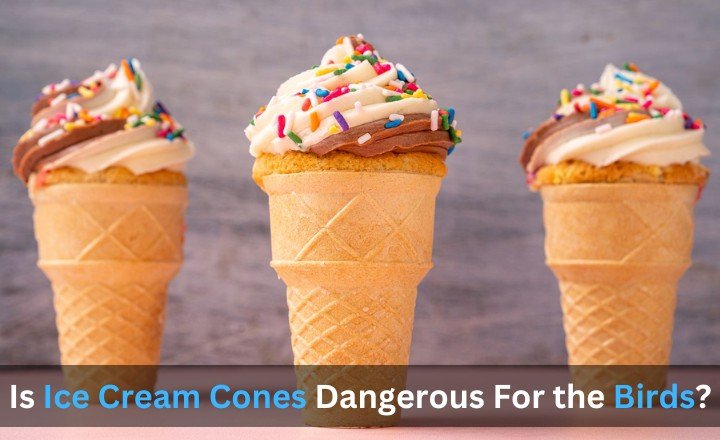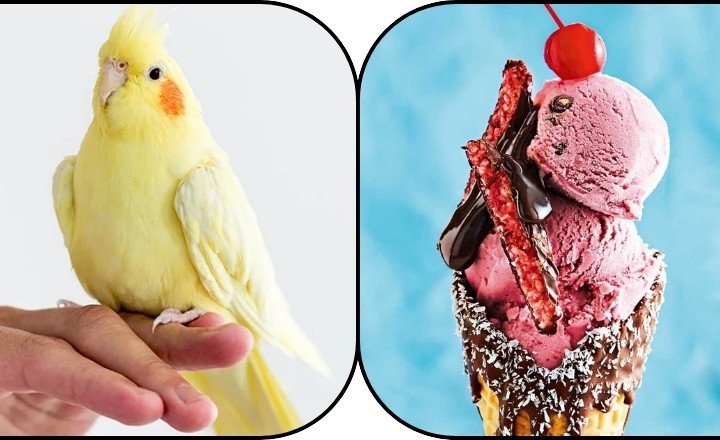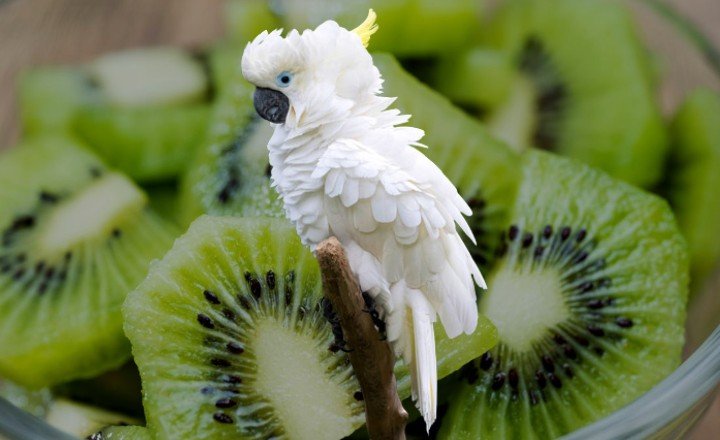Can Birds Eat Ice Cream Cones? Is It Harmful or Not?
As a birdwatching enthusiast, I am often captivated by the whimsical antics of our feathered friends. From their acrobatic flight patterns to their melodic songs, every encounter feels like nature’s own performance art. But on one sunny afternoon, as I savored an ice cream cone at the local park, I couldn’t help but wonder, can birds eat ice cream cones? The thought sparked my curiosity and led me down a delicious rabbit hole of research.
Imagine the sight, a group of sparrows perched nearby, eyeing my treat with what seemed like envy or perhaps intrigue. In this article, we explore whether birds can truly indulge in this summery delight and what it means for both them and us.
Nutritional Value of Ice Cream Cones
Ice cream cones, often overlooked in desserts, offer more than a convenient way to enjoy your favorite frozen treat. Many cones are made from simple ingredients like flour and sugar, making them relatively low in fat compared to other dessert options.
Opting for whole grain or gluten-free varieties can boost the fiber content, contributing positively to digestion. This means that while indulging in an ice cream cone might feel decadent, it also has elements that can fit into a balanced diet when combined with healthier toppings.

Nutritionists are beginning to draw parallels between the enjoyment of ice cream cones and popcorn’s appeal as a treat both have an innate ability to evoke nostalgia while also providing room for creativity. Just as Popcorn can be seasoned and customized endlessly with various flavors and toppings from savory spices to sweet drizzles so too can your ice cream cone be transformed into a nutritional powerhouse with fruits or nuts.
Can Birds Eat Ice Cream Cones?
While it may be tempting to share your ice cream cone with the feathered friends in your garden, it’s essential to consider the ingredients. Ice cream itself often contains sugar and dairy, which are not ideal for birds. Many species can struggle with lactose, leading to digestive issues, while excessive sugar can disrupt their natural dietary balance.
The cone presents a different dilemma. Made from flour and Cornmeal, the cone is generally safe for birds as long as it’s plain without any chocolate or added flavorings. Chocolate is particularly toxic to many animals, including birds, even small amounts can lead to serious health problems.

Instead of indulging them with sweet treats that might do more harm than good, consider providing fresh fruits or seeds that align better with their natural feeding habits. Opting for safer alternatives ensures our avian companions remain healthy while still enjoying the occasional snack treat!
Is Ice Cream Cones Dangerous For the Birds?
The allure of ice cream cones extends beyond human enjoyment; it’s tempting for birds like the elegant white birds and vibrant Red Birds, drawn by sweet smells and colorful wrappers. While it may seem harmless to share a moment with these feathered friends, the implications can be detrimental. The sugar content in ice cream is not only unhealthy for birds but can lead to digestive issues, which may disrupt their natural behavior and feeding patterns.
The wooden or cardboard structure of an ice cream cone poses an additional risk. Birds often mistake these materials for nesting materials or potential food sources. Ingesting pieces of cones could cause blockages in their digestive systems.

This misinterpretation highlights a greater concern, our actions inadvertently shape wildlife’s interactions with human waste and discarded food items. As caretakers of our environment, considering how even small indulgences might impact local wildlife especially charming red and White Birds encourages us to seek better alternatives that nurture rather than harm them.
Advantages of Ice Cream Cones For the Birds
Ice cream cones, often considered just a sweet treat for humans, can play a surprising role in the avian ecosystem, particularly benefiting species like hawks and owls. When these cone remnants are left behind in parks or picnic areas, they offer an unexpected source of nourishment. Hawks, known for their keen eyesight and hunting prowess, might scavenge on the sugary remnants inside leftover cones. The confectionery residue can attract insects, which becomes an easy meal for these raptors when they swoop down to investigate the area.

Owls are also poised to capitalize on this quirky food source. Although primarily nocturnal hunters that prey on small mammals and birds, certain Owls species like barn owls are opportunistic feeders. An abandoned ice cream cone could lead them to other food sources as well since it attracts numerous critters searching for sweetness.
Disadvantages of Ice Cream Cones For the Birds
While ice cream cones may seem like a delightful treat for birds, especially those brown-feathered friends often spotted in parks, there are several drawbacks that can impact their well-being. For one, the sugar content in the leftover remnants of a cone can disrupt their natural feeding habits. Brown Birds typically thrive on a balanced diet of seeds and insects; indulging too frequently in sugary treats might lead them to neglect these essential food sources, affecting their nutrition and overall health.

The physical structure of ice cream cones poses potential hazards. The crunchy texture could cause choking or digestive issues if overly consumed. Untreated paper or cardboard cones may contain chemicals or inks that are harmful when ingested.
Tips For the Birds Owners
When treating your feathered friends to the joys of an ice cream cone, it’s crucial to prioritize their health. Opt for plain, sugar-free cones made from whole grains or those specifically designed for birds. Many traditional cones are loaded with additives that can harm avian digestive systems, hence, always check the ingredient list.

Consider serving these delightful treats during warmer months when your birds might need extra hydration and enrichment. You can even enhance the experience by filling the cones with avian-safe fruit purees or yogurt alternatives as a playful surprise.
‘Can Birds Eat Ice Cream Cones’ Conclusion
While birds may be attracted to the sugary and crunchy nature of ice cream cones, it is important to consider their dietary needs and potential health risks. Ice cream itself can be harmful due to its high sugar content and dairy, which many birds cannot digest properly.
The cone, being made of processed ingredients, should also be given sparingly if at all. Instead of indulging our feathered friends with human treats, providing them with natural seeds, fruits, and vegetables will better support their health and well-being.
FAQs
How to Make an Ice Cream Cone Bird Feeder?
Creating an ice cream cone bird feeder is a delightful and eco-friendly way to attract feathered friends while recycling common household items. Begin by taking a standard sugar or waffle cone, which provides an appealing and biodegradable base for your feeder. Smear the inside with peanut butter this sticky layer will hold onto the seeds, turning the cone into a feast for birds. Next, roll the peanut butter-coated cone in a mixture of birdseed until fully covered
Is Ice Cream OK For Birds?
Most birds lack the enzyme needed to properly digest lactose, which could lead to gastrointestinal issues if they consume dairy products.
Can Ice Cream Cones Damage the Organs of the Birds?
When birds consume discarded cones, their delicate digestive systems struggle to process the sugars and additives often found in flavored cones, leading to potential gastrointestinal distress.







